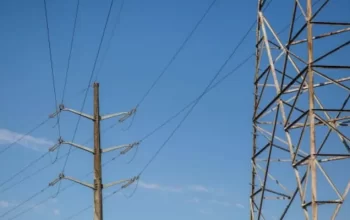According to the Minister of Energy and Water, João Baptista Borges, the replacement of thermal energy by solar energy represents a saving of 275 million liters of diesel per year for the country.
The head of the Energy portfolio spoke to the press at the inauguration of the Biópio photovoltaic power plant, in the municipality of Catumbela, in the province of Benguela.
The Biópio photovoltaic plant, as well as the Baía Farta plant, inaugurated this Wednesday, are part of a set of seven units, with a global capacity of 370 megawatts.
According to the minister, the construction of photovoltaic parks is part of a strategy that aims to achieve several objectives, including producing cheaper and more accessible energy to the population, promoting universal access to electricity.
“It is intended to reach the commitment to the energy transition and decarbonization of the economy, recalling the global commitment, to which the country adhered, to keep the increase in global warming below 1.5 degrees Celsius”, he said, in a statement to which the VerAngola had access.
Another objective mentioned by the minister is the expansion of the weight of renewable energies in the energy matrix. “With the entry into operation of these two parks, the proportion of renewable capacity increases from 60 to 65 percent, recalling that the goal set by the President of the Republic, in Glasgow, is to reach 72 percent by 2025, and is therefore moving towards that goal”, he pointed out.
The country also intends to mitigate the impact of prolonged droughts on the reservoirs of large dams, such as Laúca, Capanda and Gove, by making management more flexible during the day, which will reduce the depletion of reservoirs.
According to João Baptista Borges, the completion of the Luena, Lucapa and Saurimo parks is expected by 2023, and the Cuito and Bailundo parks in 2024.
For the next five years, he added, the Executive has approved and has already contracted works that will bring energy to more than nine million people in 11 provinces, namely in Lunda Norte, Lunda Sul, Moxico, Huíla, Cuando Cubango, Cunene, Namibe, Luanda, Cabinda. , Malanje, and Bié, with funding of more than US$3 billion, he said.
Across the country, 113 locations, municipal and communal centers were selected, where a set of photovoltaic panels with battery storage will be installed, including distribution networks, public lighting, 967 thousand connections, as well as the installation of 448 rural supply systems. of water. In addition, the minister also announced that 152,458 individual solar systems will be distributed, to benefit more than 762,290 citizens
![]()




